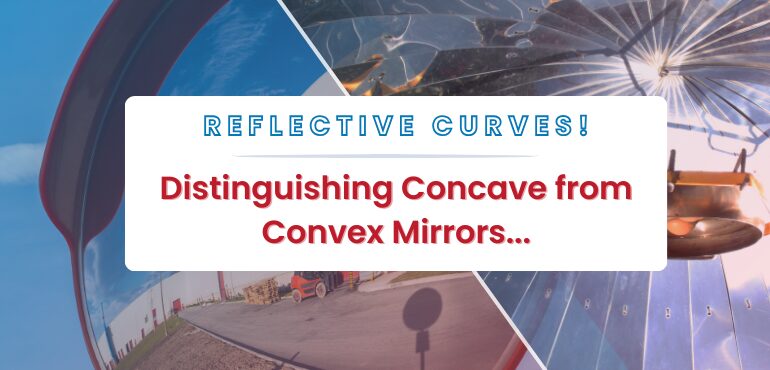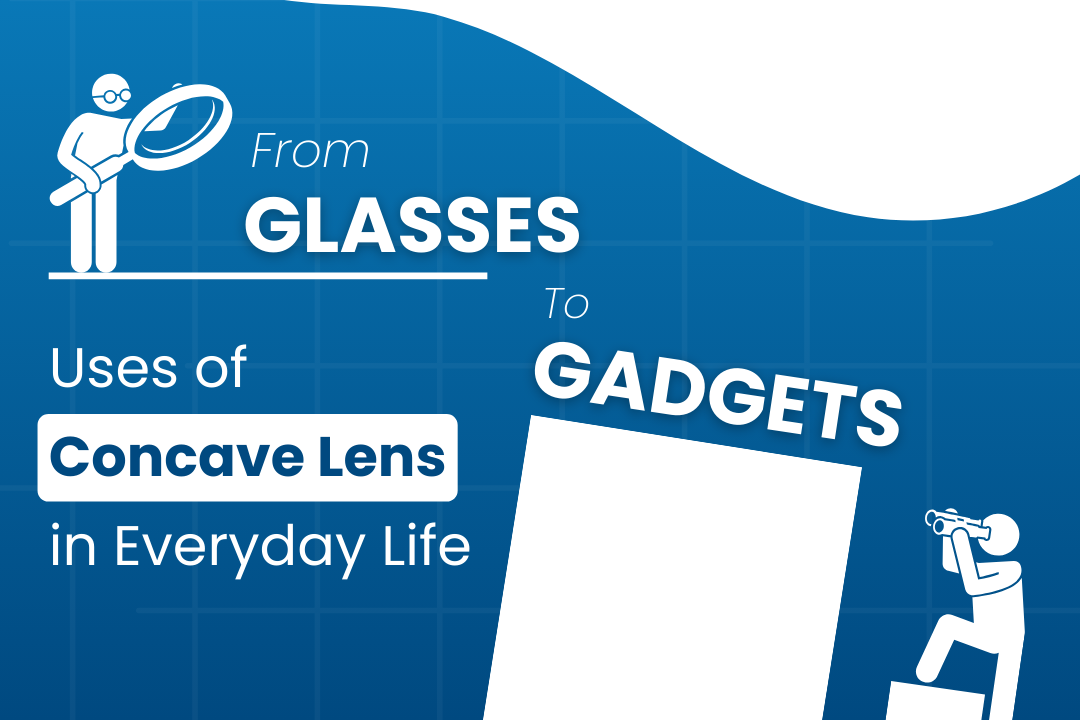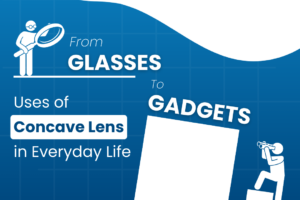
Mirrors play a crucial role in our daily lives, aiding us in various activities, from personal grooming to traffic safety. Concave and convex mirrors are two fundamental types of mirrors, each with distinct characteristics and applications. In this article, we will explore the differences between concave and convex mirrors, their unique properties, and the diverse ways in which they are utilized. Additionally, we will discuss how mirrors are different from lenses, highlighting the specific roles and functions each serves in the field of optics.
Concave Mirror Definition
A concave mirror is a reflective surface that curves inward, resembling a section of the inner surface of a sphere. It is characterized by its ability to converge parallel rays of light. When light rays strike a concave mirror, they reflect and converge at a focal point. Concave mirrors can produce both real and virtual images. Uses of concave mirrors include reflecting telescopes, makeup mirrors, and automobile headlights.
Convex Mirror Definition
A convex mirror is a reflective surface that curves outward, mimicking a section of the outer surface of a sphere. Unlike concave mirrors, convex mirrors diverge parallel rays of light. When parallel rays strike a convex mirror, they reflect and diverge as if coming from a point behind the mirror. Convex mirrors always produce virtual images, which are upright and diminished in size. Uses of convex mirrors include rearview mirrors in vehicles, security mirrors, and roadway safety mirrors.
Difference Between Concave and Convex Mirror
Here are the differences between concave and convex mirrors:
Shape and Curvature
Shape and curvature are the main ways that concave and convex mirrors differ from one another. A concave mirror has an inward curve that makes it resemble a section of a sphere’s interior surface. A convex mirror, on the other hand, is bent outward to resemble a portion of a sphere’s exterior. These mirrors’ reflecting qualities are greatly influenced by their curvature.
Reflective Properties
Concave Mirror: The capacity of a concave mirror to converge light beams is well known. Light beams that are parallel to one another are reflected and converge at a focal point by a concave mirror. Concave mirrors have a focal point, which is an essential feature to comprehend their uses.
A true focal point and a virtual focal point are present in concave mirrors. Where the extended reflected rays appear to merge when traced backward is the virtual focal point; the true focal point is where the light rays actually converge.
Convex Mirror: Convex mirrors, in contrast, diverge parallel rays of light. When parallel rays strike a convex mirror, they reflect and diverge as if coming from a point behind the mirror. Unlike concave mirrors, convex mirrors have only one focal point, and it is a virtual focal point. The focal point for a convex mirror is the point where the extended reflected rays appear to diverge from.
Image Formation
Concave Mirror: Concave mirrors can produce both real and virtual images. Real images are formed when the reflected light rays actually converge at a point. These images can be projected onto a screen. On the other hand, virtual images are formed when the extended reflected rays appear to converge when traced backward. These images cannot be projected onto a screen but are perceived by an observer as if they were coming from a specific point.
Convex Mirror: Convex mirrors always produce virtual images. The diverging nature of the reflected rays prevents them from actually converging. As a result, the virtual image formed by a convex mirror is always upright, diminished in size, and located behind the mirror.
Uses and Applications
Concave Mirror:
- Concave Mirrors in Reflecting Telescopes: Concave mirrors are commonly used in reflecting telescopes. The unique ability to converge light rays makes them ideal for focusing on distant celestial objects.
- Makeup Mirrors: Some makeup mirrors use concave mirrors to provide a magnified view of the face. The converging property helps in offering a detailed and enlarged reflection.
- Automobile Headlights: Concave mirrors are employed in automobile headlights to focus and direct the light beam.
Convex Mirror:
- Rearview Mirrors in Vehicles: Convex mirrors are widely used as rearview mirrors in vehicles. Their ability to provide a wider field of view is essential for drivers to monitor the traffic behind them.
- Security Mirrors: Convex mirrors are used in security applications, such as in stores and parking lots, to provide a broader perspective and minimize blind spots.
- Roadway Safety Mirrors: Convex mirrors are installed at sharp turns and intersections to enhance road safety by allowing drivers to see around corners.
Size of Images
Concave Mirror: The size of the image formed by a concave mirror can vary. Depending on the object’s position relative to the focal point, the image can be magnified, diminished, or the same size as the object.
Convex Mirror: The images formed by convex mirrors are always diminished and upright, regardless of the object’s position. This reduction in size is a result of the diverging nature of the reflected rays.
Ray Diagrams
Ray diagrams are graphical representations used to understand image formation by mirrors. Both concave and convex mirrors have specific ray diagrams that illustrate how light rays interact with the mirror surface to form images. These diagrams are essential tools for predicting the characteristics of images formed by mirrors.
Here’s the information presented in a tabular format for better clarity:
| Aspect | Concave Mirror | Convex Mirror |
|---|---|---|
| Shape and Curvature | Curved inward, resembling a section of the inner surface of a sphere | Curved outward, resembling a section of the outer surface of a sphere |
| Reflective Properties | Converges parallel rays of light | Diverges parallel rays of light |
| Focal Points | Real and virtual focal points | Only a virtual focal point |
| Image Formation | Can produce both real and virtual images | Always produces virtual images |
| Real Images | Formed when reflected rays actually converge | Not applicable |
| Virtual Images | Formed when extended reflected rays appear to converge when traced backward | Always formed, as reflected rays diverge |
| Applications | Reflecting telescopes, makeup mirrors, automobile headlights | Rearview mirrors in vehicles, security mirrors, roadway safety mirrors |
| Size of Images | Can vary based on object position relative to the focal point | Always diminished and upright |
| Ray Diagrams | Specific ray diagrams for concave mirrors illustrate how light rays converge | Specific ray diagrams for convex mirrors illustrate how light rays diverge |
Conclusion
In summary, concave and convex mirrors exhibit fundamental differences in shape, curvature, reflective properties, image formation, uses, and applications. While concave mirrors converge light rays and can produce both real and virtual images, convex mirrors diverge light rays, forming only virtual images. The distinct properties of these mirrors make them valuable in various fields, from astronomy to everyday applications like vehicle safety and personal grooming. Understanding the differences between concave and convex mirrors enhances our knowledge of optics and how these mirrors contribute to our daily lives.








